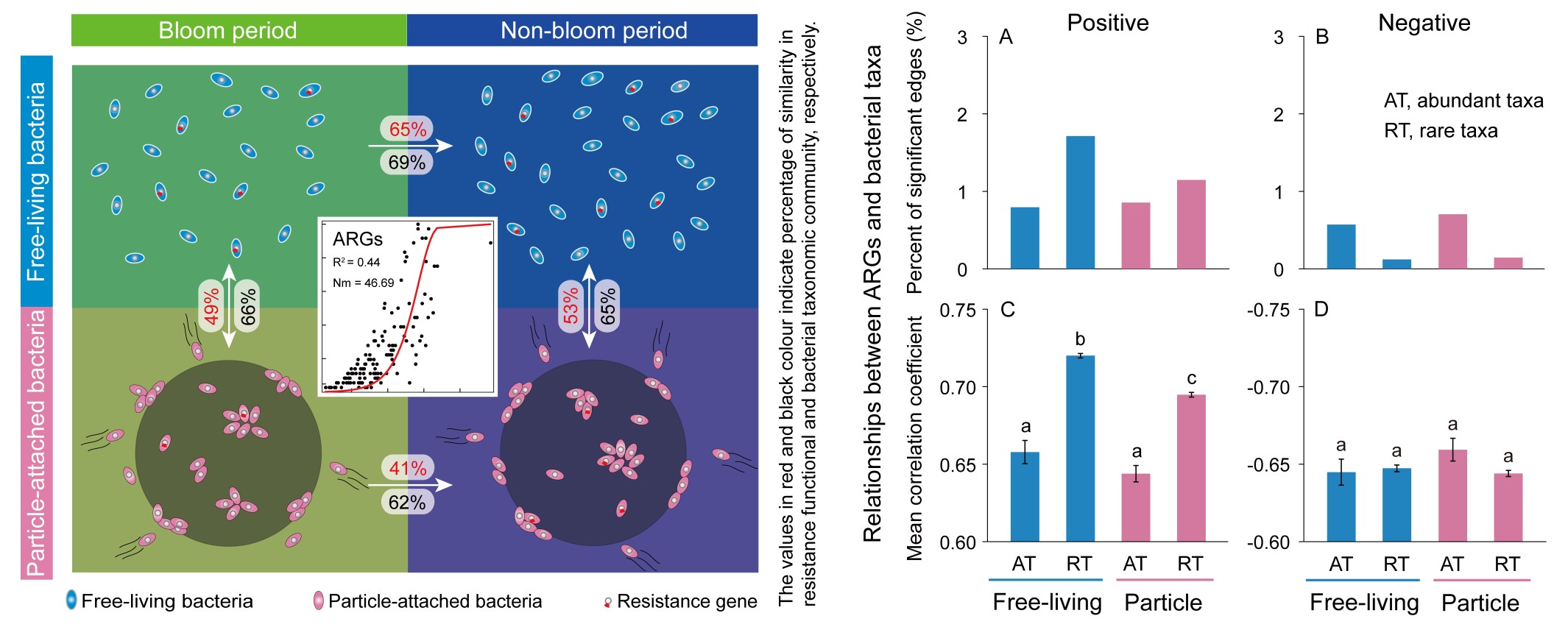In freshwater ecosystems, both antibiotic resistance genes (ARGs) and cyanobacterial blooms attract global public health concern. In particular, increasing anthropogenic activities under fast urbanization and climate warming are promoting the emergence, spread and accumulation of ARGs which may lead to the change or loss of ecosystem services. Aquatic ecosystems, such as reservoirs and lakes, are important environmental sources and sinks of ARGs and possess abundant bacteria carrying ARGs. The bacteria carry ARGs is so-called “antibiotic resistance bacteria” (ARB). People are more susceptible to be infected by ARB in freshwater environment than in other environment because people frequently and directly touch freshwater (e.g. swimming), drink freshwater and eat aquatic products. Cyanobacterial blooms can greatly impact bacterial taxonomic communities, but very little is known about the influence of the blooms on antibiotic resistance functional community.
The research group led by Prof. Jun Yang simultaneously investigated the ARGs in both free-living (FL) and particle-attached (PA) bacteria under bloom and non-bloom conditions in a subtropical reservoir by employing high-throughput approaches. In total, 145 ARGs and 9 mobile genetic elements (MGEs) were detected in their study and the most diverse and dominant ARGs (68.93%) were multidrug resistance genes and efflux pump mechanism. They found FL bacteria during bloom period had the highest ARGs abundance. The richness of ARGs in both FL and PA bacteria was significantly lower during the bloom period compared with non-bloom period, although > 96% ARGs were shared in both FL and PA bacteria or both bloom and non-bloom periods. Cyanobacterial blooms appear to have stronger inhibitory effect on ARG abundance in FL bacteria, and stronger influence on antibiotic resistant gene composition in PA bacteria. Both neutral and selective processes interactively affected the ARG composition dynamics of the FL and PA bacteria, but the antibiotic resistant profile of FL bacteria exhibited a higher level of temporal stochasticity following the bloom event than PA bacteria. The result of this study emphasized the bacterial lifestyles as an important mechanism, giving rise to different responses of antibiotic resistome to the cyanobacterial bloom. This study provides the fundamental data of ARGs distribution in aquatic environments which can be valuable references for ARGs monitoring, safety assessment an eco-risk control in reservoirs and lakes.
The research entitled “The antibiotic resistome of free-living and particle-attached bacteria under a reservoir cyanobacterial bloom” was published in an international journal of environmental science. Environment International, 2018, 117: 107–115 (Category 1, IF=7.297) (Yunyan Guo, Min Liu, Lemian Liu, Xuan Liu, Huihuang Chen, Jun Yang*). This study was supported by National Key Research and Development Program of China, National Natural Science Foundation of China and the Xiamen Municipal Bureau of Science and Technology.
